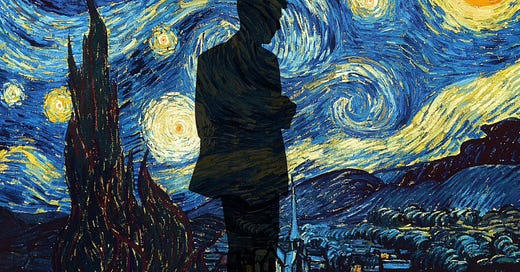The archetype of the “tortured artist” is woven deeply into our cultural fabric. From Van Gogh to Hemingway, we romanticize the idea that brilliance requires suffering—that addiction, mental anguish, and chaos are the price of creativity.
But what happens when this narrative isn’t just a trope, but a lived reality? How do we reconcile the truth that pain can fuel art, while also honoring the human behind the creativity who deserves peace?
Creativity often thrives in minds wired to feel deeply, question relentlessly, and see the world through a lens of vivid emotion. For many artists, this sensitivity is both a gift and a burden. The same intensity that births a haunting melody or a soul-stirring painting can also leave one raw, exposed, and seeking relief. Addiction, for some, becomes a misguided attempt to regulate that overwhelm—to numb the noise or quiet the storm.
But here’s what often goes unspoken: addiction doesn’t “fuel” creativity; it hijacks it.
The myth that substances unlock genius is just that—a myth. What they do unlock is a temporary escape from the weight of existing in a world that feels too bright, too loud, or too hollow. The art created in these moments isn’t born from the addiction itself, but from the humanity persisting beneath it.
For those with addiction in their bloodline, the struggle can feel predestined. Generational patterns of coping—through alcohol, drugs, or other self-destructive behaviors—cast long shadows. But genetics and legacy are not life sentences. They are clues, not curses. Understanding the “why” behind the pull toward chaos can be the first step in rewriting the story.
Therapy here becomes a space to ask:
- What parts of this pain are mine, and what parts were handed to me?
- How can I honor my creativity without repeating the cycles that harm it?
Healing doesn’t mean sanitizing the artist. It means building a relationship with the pain—not as a muse, but as a teacher. Consider these shifts:
1. Separate the art from the agony. Creativity doesn’t require suffering; it requires aliveness. What if your work could emerge from curiosity instead of crisis?
2. Rewrite the ritual. If substances have been part of your creative process, experiment with new anchors: a walk before writing, meditation before painting, or a grounding breath before picking up the instrument.
3. Embrace “good enough”. The pressure to be extraordinary can be suffocating. What if creating for the sake of creating—imperfectly, messily—is the bravest act of all?
One of the greatest fears I hear from artists in therapy is: If I heal, will I lose my edge?
The answer is no—because creativity isn’t rooted in chaos. It’s rooted in connection: to yourself, your experiences, and the world around you. Healing allows that connection to deepen, not disappear.
The goal isn’t to erase the artist’s fire, but to tend it with intention. To build a life where the art and the artist can coexist—not as adversaries, but as allies.
Your pain is valid. Your creativity is sacred. And you deserve more than a life split between brilliance and burnout. Therapy isn’t about fixing you; it’s about helping you hold all parts of yourself—the light, the dark, and the daring—with compassion.
The most profound art often emerges not from the storm itself, but from the clarity found in its aftermath. You are not your addiction. You are not your trauma. You are a creator, and creation begins with choice.





"What if creating for the sake of creating—imperfectly, messily—is the bravest act of all?"
Love that part.
This dismantles one of the most dangerous myths about creativity—the idea that suffering is the price of brilliance. Pain may inform art, but it doesn’t create it. The artist does.
And that fear—‘If I heal, will I lose my edge?’—man, that’s real. But as you said, creativity isn’t rooted in chaos. It’s rooted in connection. Healing doesn’t dull the artist; it frees them. It lets them create without self-destruction being part of the process.
This post is a reminder that we don’t have to burn ourselves to fuel the fire. We can create from clarity, from curiosity, from simply being alive. And that’s powerful